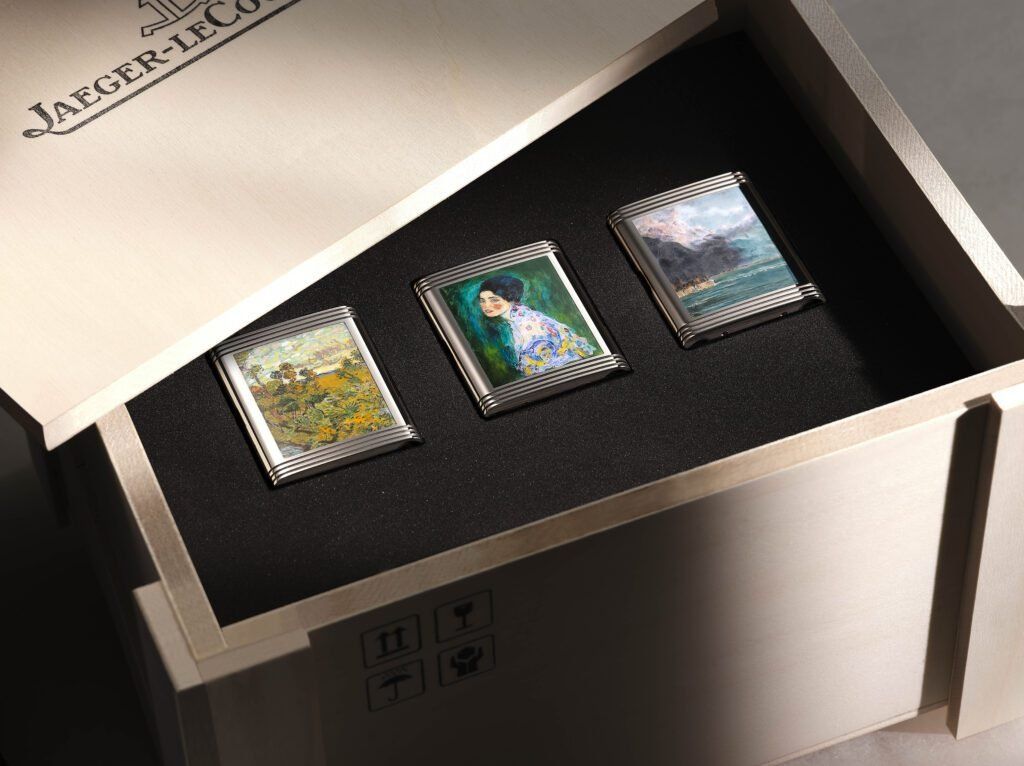Jaeger-LeCoultre's Hidden Treasures: Art Deco At Its Finest
Art Deco- a term that would not have been popular in the 1900s, but today it gives us a chance to relive history. The 1925 exhibition was a celebration, a break from the past. The contrast between the world before 1914 and the world celebrated at the 1925 exhibition was that of night and day, black and white, young and old.
Art Deco was a celebration of all that the prewar world had repressed. It was a historically interesting design capable of relating to the modern world, not with the technological purity of more earnest expressions of modernity but with an abandon calculated to stimulate popular fantasy.
The archives of Jaeger LeCoultre hold one of the most fascinating, most beautiful, and enigmatic of Reverso's ever made. Dating from 1936, early in the model's history, a one-of-a-kind Reverso bears a stunning portrait in miniature enamel painting on its caseback.
The links between India and the Reverso are strong. During the years between the two World Wars, the maharajas who kept their ancestral lands and principalities were often enthusiastic patrons of the new Art Deco style and its most representative timepiece, the Reverso.
While the dial's blank metal flip side began as a purely utilitarian solution to avoid damage to the dial, it became a suitable surface for monograms, emblems, and personal messages to be added using lacquer, engraving, or enamel. The owner can keep this ornament as a personal, secret treasure or flip the case over so that the back becomes the front.
It was taking pleasure in all that the new world offered. Reverso Tribute Enamel Hidden Treasures, a trio of timepieces celebrating the work of three great masters from the dawn of Modern Art: Gustave Courbet, Vincent Van Gogh, and Gustav Klimt, mark the 90th anniversary of Reverso's birth yet again. The new watches also combine three separate artisanal talents used by Manufacture Jaeger-LeCoultre: grand feu enamel, miniature painting, and guillochage, which is done on century-old hand-turned machines.
The Reverso Tribute line is most similar to the originals in terms of stylistic nuances, and the trademark simplicity of the dials in these three new watches highlights the delicate beauty of the guilloché backgrounds. Each dial's color - a different shade of misty blue or green–alludes to the colors of the enameled gems hidden on the opposite side, while the minimalist design contrasts with the richness and complexity of the little works of art.
From Courbet's 19th-Century Realism to Van Gogh's Post-Impressionism to Klimt's expressive and experimental spirit and the Viennese Secession, the three paintings reproduced in the Reverso Tribute Enamel Hidden Treasures triptych represent three markers of a major watershed in the Western artistic tradition. The Manufacture's experts found three stunning paintings hidden from the public for decades, thought to be lost forever until their recent earthing and authentication, to honor the Reverso's unique ability to conceal or disclose the creative treasure generated on its reverse side.
Gustave Courbet- View of Lake Léman (1876)
Exiled from France in 1873, Gustave Courbet moved to Vevey, on the edge of Switzerland's Lake Léman (Lake Geneva), where the ever-changing views across the water, inspired him. Courbet has captured the movement of the clouds and the sunshine on the lake's surface in this incredibly evocative piece.
Jaeger-master LeCoultre's enameler for the Reverso Tribute Enamel Hidden Treasures recreates the delicate colour palette, subtle details, and evocative ambience of the original. The sparkling white gold casing and the subtle herringbone guilloché texture of the misty grey-blue dial perfectly match the painting's mild tones.
Vincent Van Gogh—Sunset at Montmajour (1888)
Van Gogh experimented with various types of visual expression after travelling to the south of France in 1888. Sunset at Montmajour, painted from life on a summer evening, exemplifies the artist's attempt to depict nature in new ways, capturing the peculiar vegetation of Provence as well as the rich colours of the 'golden hour' immediately before sunset.
The expert enameler at Jaeger-LeCoultre accurately recreates the original's powerful sense of perspective, as well as the effect of the artist's signature brush strokes and rich impasto, for the Reverso Tribute Enamel Hidden Treasures.
Gustav Klimt-Portrait of a Lady (1917)
Portrait of a Lady, painted by Gustav Klimt a year before his death, is the only known 'double' portrait by the Viennese artist, painted over an earlier piece. Klimt passed away abruptly after falling madly in love with a young woman who became his muse. He painted over her portrait with a new one, of a different lady, to soothe the sorrow of his loss.
Portrait of a Lady, reproduced in miniature on the case back of the Reverso Tribute Enamel Hidden Treasures, captures the same dreamy feeling that Klimt achieved. The subject's graceful attitude and fashionable clothes are faithfully preserved, while the background's green tones provide a sense of depth, just as in the original. The green dial evokes the portrait's background brilliantly, embellished with grand feu enamel over a lovely barleycorn guilloché design.
The rise of Art Deco is no surprise. The culture of uniting all processes of watch-making, from the manufacture of the humblest mechanical component to the case, was to become a defining characteristic of the manufacture and this integration of all aspects of design and production continues to distinguish the brand in the 21st century.
The Reverso’s value lies not in the price of its materials and lavishness of its embellishments but the ingenuity and intricacy of its engineering. Jaeger-LeCoultre's choice of materials, intentions, innovations has made the Reverso the quintessential representation of Art Deco.
No articles found













